
Even consumers who
describe themselves as intolerant of advertising in video streaming services watch ad-supported streamers, according to Hub Entertainment Research’s latest survey on attitudes toward
advertising.
As in previous Hub surveys, this one — conducted in November among a U.S. census-balanced sample of 3,000 consumers 14 to 74 who watch at least an hour of TV per week
— found nearly 60% of consumers saying they would rather watch ads to save money than pay to watch ad-free content, versus just 40%-plus saying they would rather pay $4 to $5 more per month for
an ad-free
option.
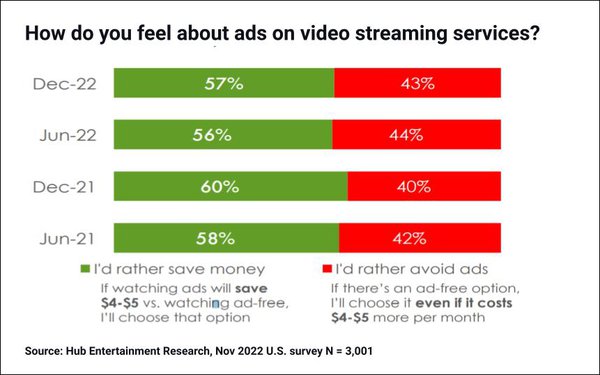
Asked to
choose between three hypothetical TV services, viewers who are given the option to choose a platform with tiered service – some with ads, some without – do so nearly twice as often as
those shown a platform that offers only one tier, with “limited ads.”
advertisement
advertisement
One third (35%) say that a service having ads doesn’t matter as long as it offers shows they want to
watch, and half (49%) say they can tolerate “a certain number of ads," but will go elsewhere if there are too many. But just 16% say they “can’t tolerate” any ads, and would
never consider a service with ads, no matter how much they like the content.
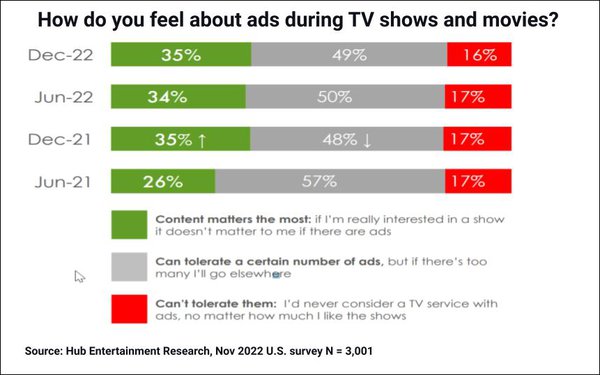
But even among those who say they are ad-intolerant, 59% report using a
free, ad-supported streaming service (FAST) at least some of the time, and 38% report using an ad-supported video-on-demand (AVOD) service (chart top of page).
And asked about the main reasons
they had cancelled ad-supported services in the past six months, just 15% cited “ad avoidance,” versus about a third citing reasons such as “financial,” “not using it
enough” and “better deal.”
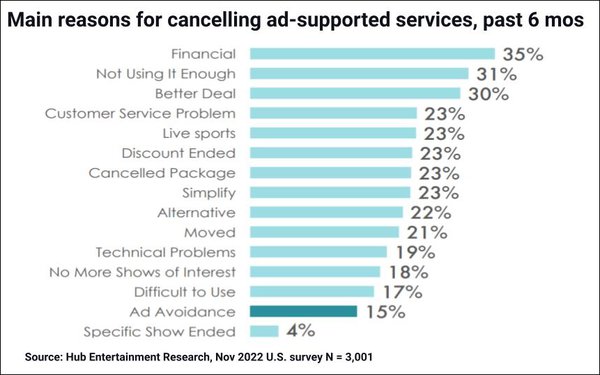
When it comes to how advertising affects the viewing experience, the AVOD tiers of major streamers consistently win higher ratings than FASTs or traditional multichannel video programming
distributors (MVPDs) on ad load, ad delivery and overall enjoyment of the viewing experience.
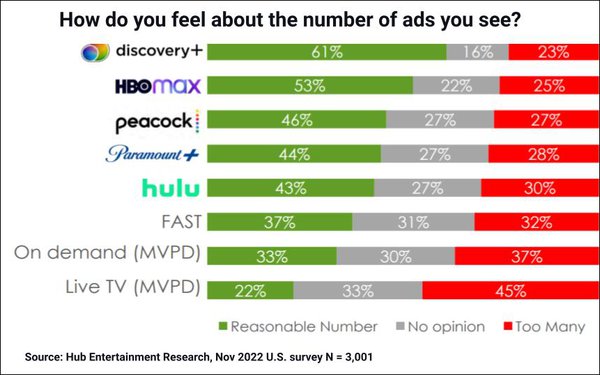
Asked about how the new availability of the cheaper, ad-supported tiers would
affect their behavior, relatively small percentages of non-subscribers to the two services said they thought they would now subscribe, using the new with-ads tiers (11% for Disney+, 15% for Netflix).
Interestingly, the same proportion — 11% — said they thought they would now subscribe to the ad-free version of Disney+, and 8% said the same about Netflix. But fully 78% of
current non-subscribers said that the availability of the cheaper, ad-supported versions would not persuade them to start subscribing to either service, with or without ads.
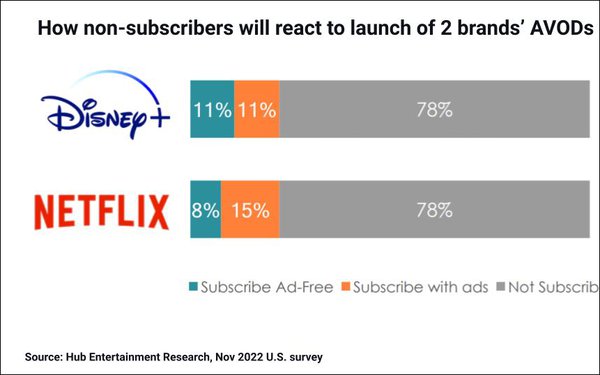
Meanwhile, more than a third (35%) of existing
Disney+ subscribers said they thought they would switch to the ad-supported version, and 24% of Netflix subscribers said the same.

The reaction of non-Netflix subscribers in the Hub survey
closely jibes with just-released actual subscriber activity data on Netflix from Antenna for November, the first month of its new ad-supported Basic with Ads tier.
Antenna found that just 9%
of new sign-ups for Netflix in the U.S. in November were for that ad-supported tier, compared to the 8% who told Hub they thought they would do so.
But Antenna’s data shows a tiny
0.1% of existing subscribers having actually switched from an ad-free Netflix plan to its new ad-supported tier during that initial month of November — a far cry from the nearly one-quarter who
told Hub that they thought they would make such a switch. However, existing subscribers' awareness of the new, cheaper with-ads option may have been limited in those first weeks, and switching rates
could well increase over time.